The Evolution of UGA Social Work and Social Work Education in Athens
Social work education began at UGA in 1921, when summer school courses offered by James L. Sibley, an “extension professor” of social work with appointments in Sociology and Rural Education, were advertised in the Bulletin. Professor Sibley taught several courses including “The Family and the Individual,” “Community Problems,” and “The State and Public Institutions.” The class on public institutions focused on “the care of dependents, delinquents and defectives.”
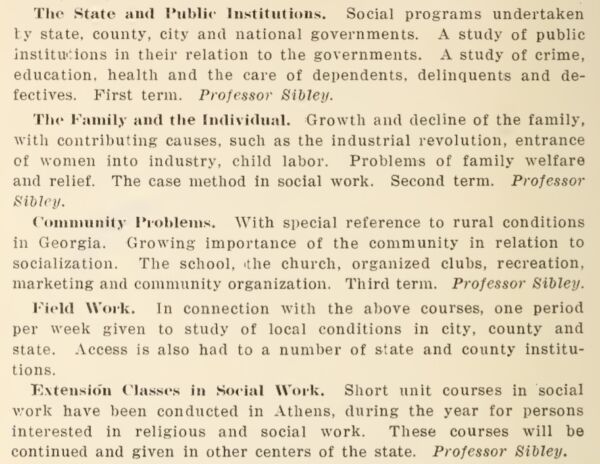
Professor Sibley taught several social work classes during the “Summer School for Teachers” in 1921.
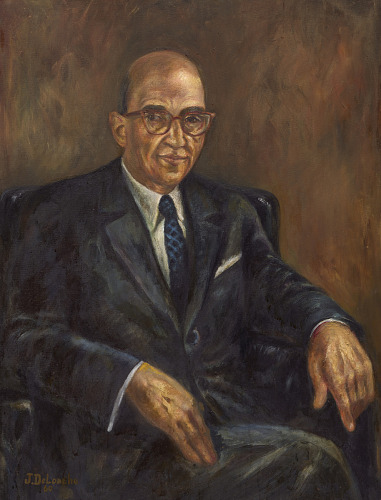
Portrait of Forrester B. Washington (1887-1963) by James Ira De Loache on display at the National Portrait Gallery in Washington, DC
Professor Sibley’s courses appeared at UGA just one year after the first school of social work had been founded in Georgia at an historically-Black university. The Atlanta School of Social Work, founded at Atlanta University in 1920, educated Black professionals to work in the Black community, and its early curriculum reflected the belief that those serving African American people needed not only basic social work education, but also additional learning directed specifically towards the African American community. Forrester B. Washington, Director of the Atlanta School of Social Work from 1927 to 1947, and the renamed Atlanta University School of Social Work from 1947 to 1954 noted in his writings,
“The existence of black people in a predominantly unsympathetic hostile world is sufficient for specialized training for social work in the black community; for this position, the writer makes no apologies.”
The University of Georgia did not educate Black professionals, and would not until after it admitted its first Black students in 1961. Still, racially-segregated social work education moved forward. When UGA advertised its 1927-28 class schedule, social work classes were included within the offerings of a combined “Sociology and Social Work” department. “Introduction to Social Work,” case work, and child welfare were all taught at the undergraduate level. In 1939, social work became its own department.
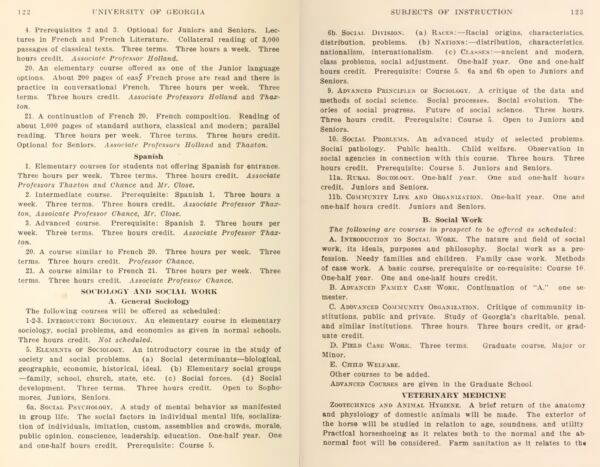
Social work classes were offered as part of the regular UGA academic schedule for the first time in 1927-28.
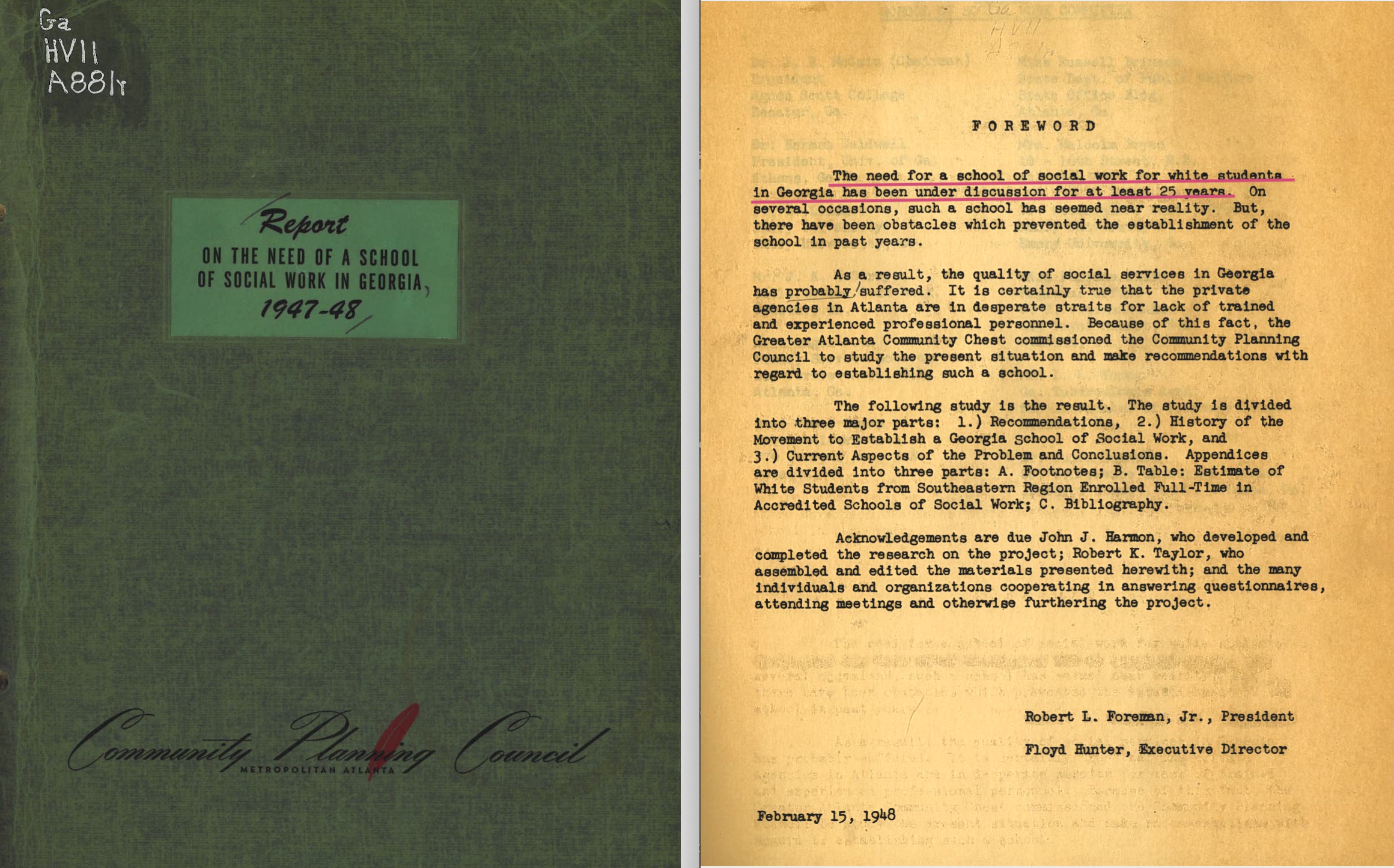
Hargrett Library, UGA
During the first half of the 20th-century, professional education In Georgia was conceived in racially-segregated terms. In 1947-48, a report from Atlanta’s Community Planning Council explicitly called for a school of social work to serve white students. The writers asserted, “The need for a school of social work for white students in Georgia has been under discussion for at least 25 years,” and the report goes on to discuss where to locate this new white school.
The UGA School of Social Work opened its doors in 1964, when UGA had already been racially desegregated for three years. The School of Social Work was UGA’s 12th academic school and the arrival of the new Dean was welcomed. Dean Charles Stewart had been Director of Social Work at Central State Hospital in Milledgeville, once the nation’s largest mental institution.
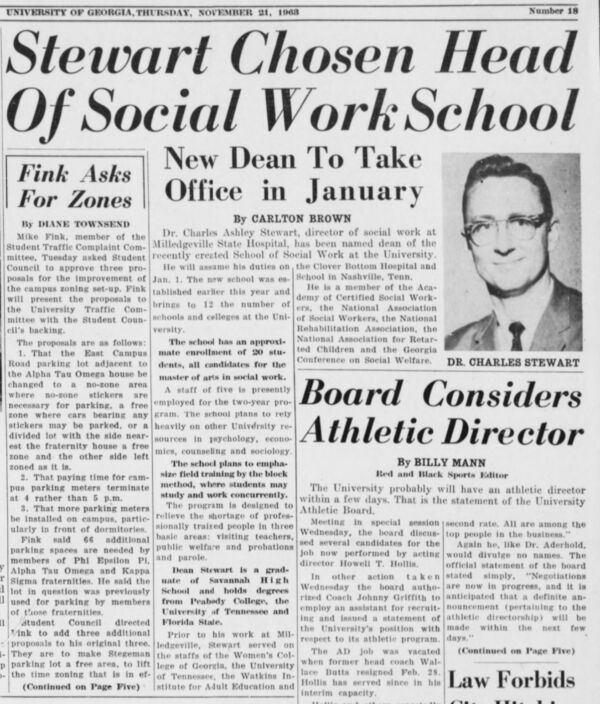
Editorial, The Red and Black, November 21, 1963 Georgia Historic Newspapers, Digital Library of Georgia

In a still from the film clip, a UGA Social Work student interacts with an Atlanta resident.
Video courtesy of UGA’s Walter J. Brown Media Archives
After its founding in 1964, the School of Social Work was committed to enrolling and graduating Black students. Nancy Jordan was the school’s first Black graduate in 1967, and four additional Black students—Barbara Brown Jeter, Ola Lumpkin Simmons, Roosevelt Green, and Freeman Walker—began their studies at the school that same year. Jeter, Simmons, and Green all went on to earn PhDs in social work or allied fields.
Still the majority of UGA’s social work students remained white. In this 1968 clip from WSB-TV news in Atlanta, UGA social work students are interviewed about spending their “vacation in slum areas of Atlanta.”


